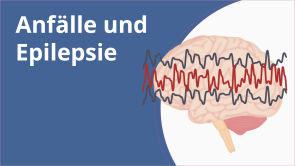Status epilepticus: Evaluation, Prognose und Klassifikation

Über den Vortrag
Der Vortrag „Status epilepticus: Evaluation, Prognose und Klassifikation“ von Roy Strowd, MD ist Bestandteil des Kurses „Anfälle und Epilepsie“.
Quiz zum Vortrag
Which statement is the most accurate with regard to breakthrough seizures?
- Medication compliance is critical in preventing breakthrough seizures.
- Fevers are the most common cause of breakthrough seizures.
- A head CT is necessary after every breakthrough seizure to look for a potential nidus.
- Routine labs should be avoided following a breakthrough seizure.
- Changing the patient’s medication regimen is the first step of treatment.
Which statement is the medical definition of status epilepticus?
- A prolonged or recurrent seizure lasting longer than 30 minutes.
- Any convulsive episode that does not respond to treatment.
- Any seizure that does not resolve spontaneously in under 5 minutes.
- A prolonged seizure lasting more than 1 hour.
- Any seizure that causes lasting brain damage or death.
Which statement regarding the epidemiology of status epilepticus (SE) is the most accurate?
- It usually presents as a febrile illness in young children.
- It accounts for 20% of all hospital admissions.
- Most patients with epilepsy will have at least one episode of SE.
- SE is more common in children over the age of 8 years.
- Most cases of SE present without convulsions.
Which statement is the most accurate regarding the prognosis of status epilepticus (SE)?
- Mortality is significantly higher if the episode lasts longer than 1 hour.
- It is a medical emergency with a mortality rate higher than 50% in children.
- The mortality in adults is lower than that in children.
- The underlying etiology does not impact mortality.
- Advanced age is protective in terms of mortality.
Which statement is the most accurate when discussing the classification and treatment options of status epilepticus (SE)?
- Refractory SE is a term used when a patient does not respond to antiepileptic drugs.
- Convulsive SE is harder to treat than non-convulsive SE.
- Non-convulsive SE is usually easy to recognize.
- Patients with super-refractory SE are treated effectively by a medically induced coma.
- Patients with refractory or super-refractory SE generally become more responsive to treatment with each episode.
Diese Kurse könnten Sie interessieren
Kundenrezensionen
5,0 von 5 Sternen
| 5 Sterne |
|
5 |
| 4 Sterne |
|
0 |
| 3 Sterne |
|
0 |
| 2 Sterne |
|
0 |
| 1 Stern |
|
0 |






